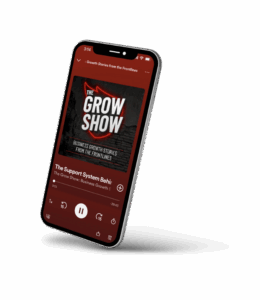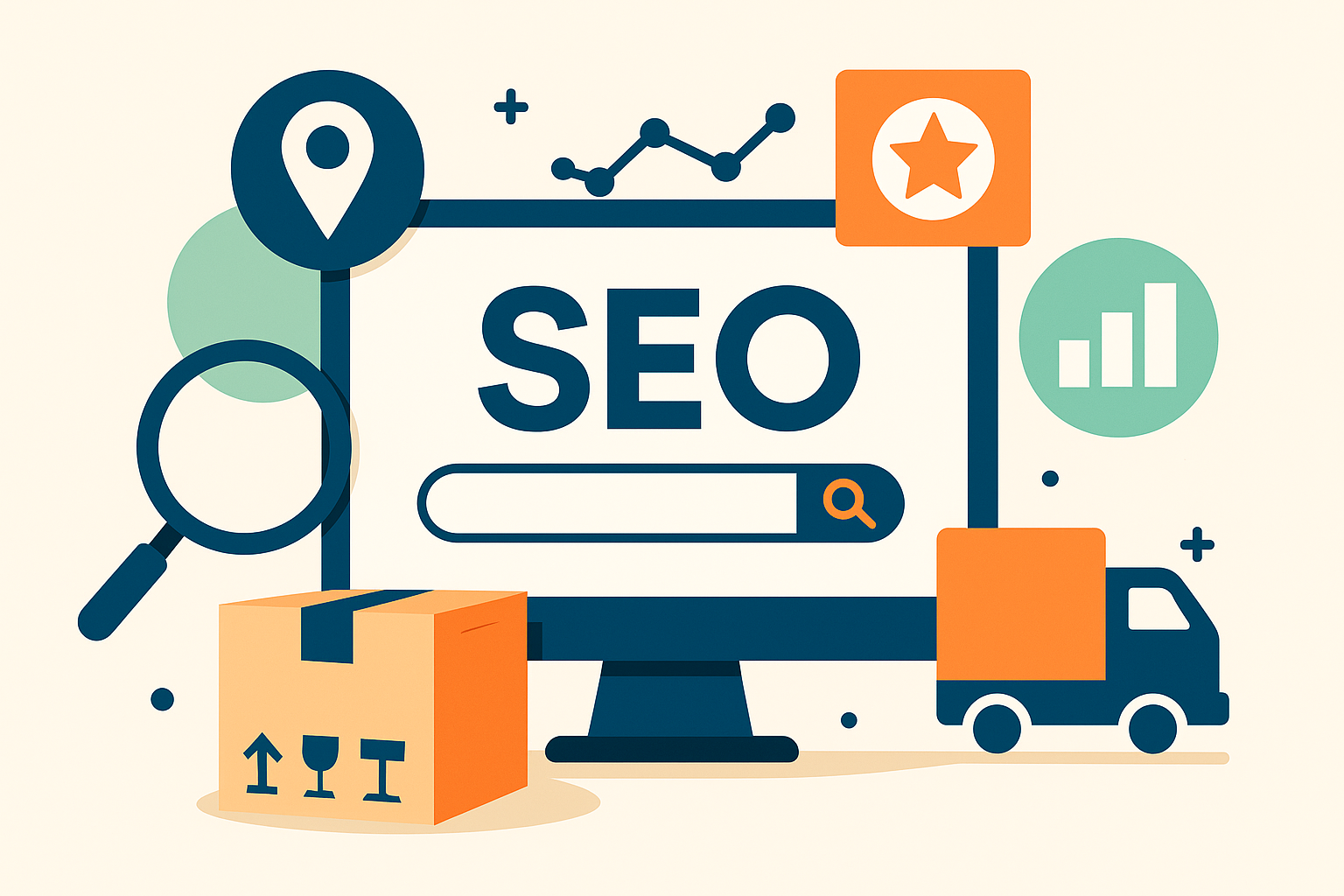In a digital-first world, being visible where your prospects are searching is no longer optional—it is critical. Whether your logistics company specializes in freight brokerage, warehousing, 3PL, or last-mile delivery, search engine optimization (SEO) is a powerful way to attract qualified leads who are actively looking for your services.
SEO for logistics companies is not just about ranking higher on Google. It is about showing up in front of the right decision-makers at the right time, whether they are looking for warehousing in Chicago, a 3PL in Atlanta, or a cross-border shipping partner in Texas. It is about owning local search, national keywords, and everything in between.
In this guide, we will break down how SEO for logistics companies works, what it includes, and why it is one of the most cost-effective growth levers available today. From keyword strategy and content creation to Google Maps optimization and backlink building, you will learn how to build a search presence that keeps your pipeline full year-round.
Contents
Why SEO Matters in the Logistics Industry
When someone searches “freight broker near me” or “best warehouse solutions for retailers,” that is a high-intent query. These are prospects with a need and a timeline. If your website ranks on the first page—or better yet, shows up in the map pack—you are in a prime position to win that business.
Here’s why logistics providers should invest in SEO:
- High buying intent: Searchers are actively looking for solutions, not passively browsing.
- Long sales cycles: SEO keeps your brand top-of-mind over time as prospects move through evaluation.
- Geographic precision: SEO helps you rank in the cities, states, or regions you serve.
- Cost-efficiency: Unlike PPC, SEO drives ongoing traffic without paying per click.
- Competitive advantage: Many logistics firms still underinvest in SEO. That leaves a wide-open field.
SEO builds trust and visibility where it matters most: on Google.
Core Components of SEO for Logistics Companies
To dominate search and maps, your SEO strategy needs to be comprehensive. That means going beyond keywords to include technical structure, content quality, local optimization, and authority building.
Let’s explore the essential elements of a high-performing SEO campaign tailored for logistics providers.
1. Keyword Research and Targeting
Everything starts with understanding what your prospects are searching for. Keyword research helps you identify the terms and phrases that matter most to your business.
Common keyword categories in logistics:
- Service-based:
- freight broker near me
- LTL carriers in [city]
- 3PL warehouse for eCommerce
- temperature-controlled shipping
- Industry-specific:
- logistics for food distributors
- retail supply chain management
- freight services for auto parts
- Local intent:
- warehousing companies in Dallas
- cross-dock near Atlanta
- logistics providers in Southern California
- Problem-based:
- reduce freight costs
- optimize last-mile delivery
- improve on-time delivery rates
Your SEO provider should map these keywords into a strategy that includes:
- Primary service pages
- Supporting blog or content pieces
- Local landing pages targeting specific regions
The goal is to capture traffic across all phases of the buyer’s journey—from awareness to purchase intent.
2. On-Page SEO Optimization
Once your keywords are identified, it is time to optimize your website pages to align with those search terms. On-page SEO tells Google exactly what each page is about, and why it is valuable to visitors.
Key on-page elements for logistics websites:
- Title tags and meta descriptions: Include primary keywords and compelling CTAs.
- Header tags (H1, H2, H3): Use structured headings with keywords and relevant subtopics.
- Body content: Make it readable, helpful, and keyword-aligned. Avoid fluff.
- URL structure: Use short, clean URLs like /freight-brokerage instead of /page?id=123.
- Internal linking: Connect pages together logically to guide both users and search engines.
- Image optimization: Use descriptive filenames and ALT tags for all images.
Each service you offer should have its own SEO-optimized page. For example:
- /freight-forwarding
- /warehousing-fulfillment
- /cross-border-shipping
This allows you to target multiple terms and increase your visibility across services.
3. Technical SEO
Technical SEO refers to the behind-the-scenes structure of your website. Even the best content can underperform if your site is slow, broken, or confusing for search engines.
Technical areas to focus on:
- Site speed: A slow-loading site hurts rankings and user experience.
- Mobile-friendliness: Most logistics decision-makers search from mobile devices.
- Crawlability: Make sure Google can index all key pages.
- Secure site (HTTPS): Security is a ranking factor.
- Structured data: Help search engines understand your content better with schema markup.
Regular technical audits ensure your site stays healthy and optimized for both users and search engines.
4. Content Strategy for Logistics SEO
Google rewards websites that provide useful, relevant content. That means creating blog posts, guides, and resources that address the real-world needs of your prospects.
Content ideas for logistics companies:
- “What to Look for in a 3PL Partner”
- “How to Reduce LTL Freight Costs by 15 Percent”
- “Cold Chain Logistics: Best Practices for Perishables”
- “Freight Class 101: A Shipper’s Guide”
- “Top 5 Mistakes Shippers Make During Peak Season”
Your SEO provider should help develop a content calendar based on keyword opportunities, seasonal demand, and buyer questions. Content drives traffic, builds trust, and helps convert leads over time.
5. Local SEO and Google Business Profile
For logistics companies that serve specific regions or operate physical warehouses, local SEO is non-negotiable. Ranking in the Google Map Pack can lead to high-converting traffic.
Steps to optimize your local presence:
- Claim and optimize your Google Business Profile: Include services, photos, hours, and a detailed business description.
- Encourage reviews: Positive reviews boost visibility and credibility.
- Build local citations: Get listed in logistics directories and local business listings.
- Create location pages: Dedicated landing pages for each area you serve.
Example:
- /logistics-services-los-angeles
- /freight-brokers-chicago
- /warehousing-dallas
These pages should be optimized with local keywords and tailored content for that market.
6. Link Building and Authority Growth
To earn higher rankings, your website needs to build authority—and that comes from backlinks. These are links from other websites that point to yours. Google sees them as votes of confidence.
High-value link opportunities in logistics:
- Industry directories (e.g., FreightWaves, Logistics List)
- Guest posting on supply chain blogs
- Features in local business publications
- Supplier and partner websites
- Sponsorships of logistics events or trade shows
Avoid spammy link schemes. Focus on earning links from reputable, relevant sources. A good SEO partner will help with outreach, content creation, and relationship building to grow your link profile over time.
7. SEO Analytics and Reporting
You cannot improve what you don’t track. Your SEO service should provide detailed, transparent reporting on performance metrics that matter.
Key SEO metrics for logistics companies:
- Organic traffic growth (overall and by service page)
- Keyword rankings and movement
- Local rankings (map pack visibility)
- Backlink growth and domain authority
- Conversions from organic search (quote requests, demo signups, form fills)
- Top-performing blog content
Monthly SEO reports should be easy to understand and tied to business goals—not just technical jargon.
Real-World Example: SEO in Action
Let’s say you operate a 3PL with facilities in Nashville, Dallas, and Charlotte. You want to generate more leads from companies needing warehousing and final-mile delivery in those areas.
A well-executed SEO strategy would include:
- A page for each service: /last-mile-delivery, /3pl-warehousing
- A local landing page for each city: /warehousing-nashville, /freight-services-dallas, /last-mile-charlotte
- Blog content such as “Why Nashville is a Strategic Hub for Retail Fulfillment”
- Technical SEO cleanup to improve speed and mobile experience
- Review generation to boost visibility on your Google Business Profile
- Backlink outreach to industry directories and partners
Within 3 to 6 months, you would begin to see more inbound traffic, form submissions, and quote requests—all from prospects already looking for what you offer.
Timeline: How Long Does SEO Take for Logistics Companies?
SEO is a long-term strategy, but that does not mean it takes forever to see results.
Here’s a general timeline:
- Month 1–2: Research, technical audits, and initial optimizations
- Month 3–4: New content and landing pages go live, early ranking improvements
- Month 5–6: First measurable traffic increases and lead generation begins
- Month 6+: Compound growth as authority builds and rankings stabilize
With a consistent strategy and the right execution, SEO becomes one of the highest ROI channels over time.
Common SEO Mistakes Logistics Companies Make
Even with good intentions, many logistics companies fail to maximize SEO due to common pitfalls:
1. Treating SEO as a one-time task
SEO is not a project. It is an ongoing process of optimization and improvement.
2. Targeting only broad keywords
Keywords like “logistics services” are too generic. Go after long-tail, industry-specific phrases.
3. Ignoring local search
If you have facilities or serve specific regions, local SEO is essential.
4. Overlooking mobile
Decision-makers research from phones. Make sure your site is fast and mobile-friendly.
5. No content strategy
Without fresh, relevant content, your rankings will stall.

Madison Hendrix
Madison has worked in SEO and content writing at Abstrakt for over 5 years and has become a certified lead generation expert through her hours upon hours of research to identify the best possible strategies for companies to grow within our niche industry target audiences. An early adopter of AIO (A.I. Optimization) with many organic search accolades - she brings a unique level of expertise to Abstrakt providing helpful info to all of our core audiences.
- Madison Hendrix#molongui-disabled-link
- Madison Hendrix#molongui-disabled-link
- Madison Hendrix#molongui-disabled-link
- Madison Hendrix#molongui-disabled-link







